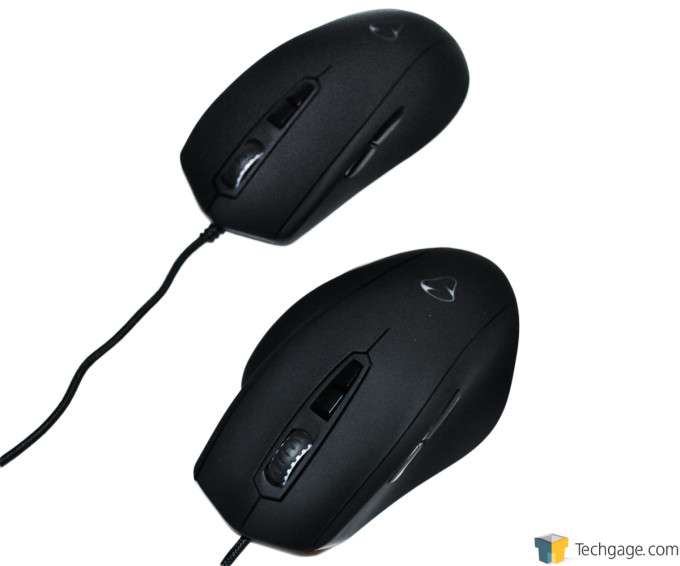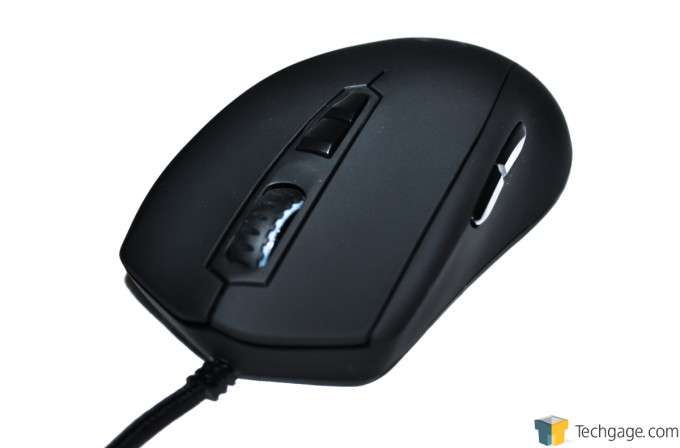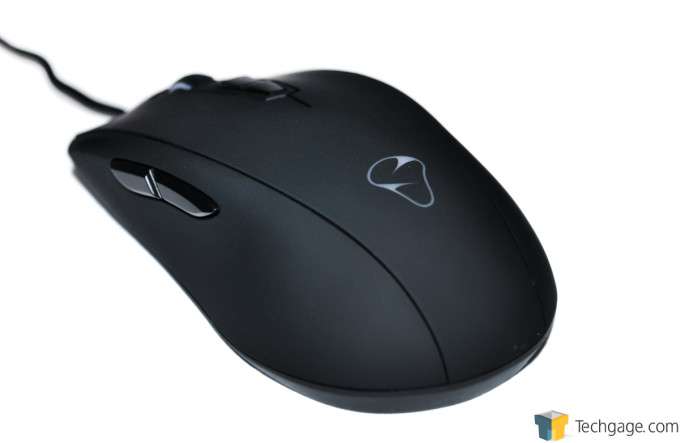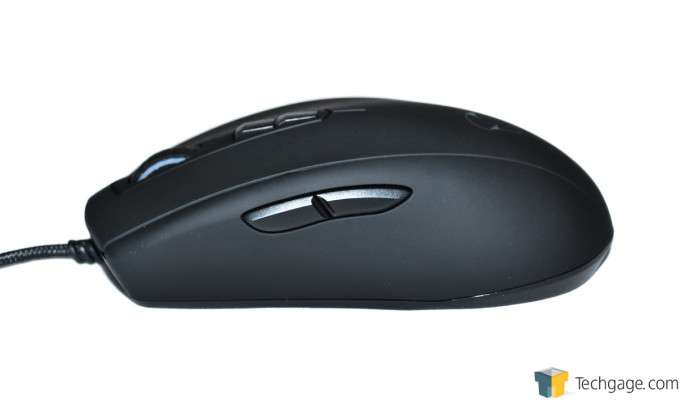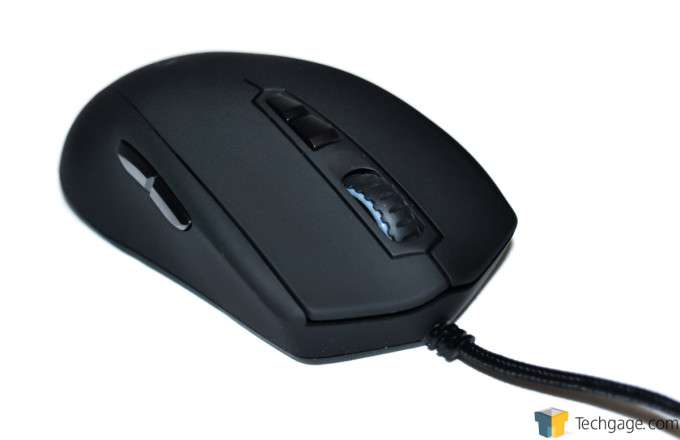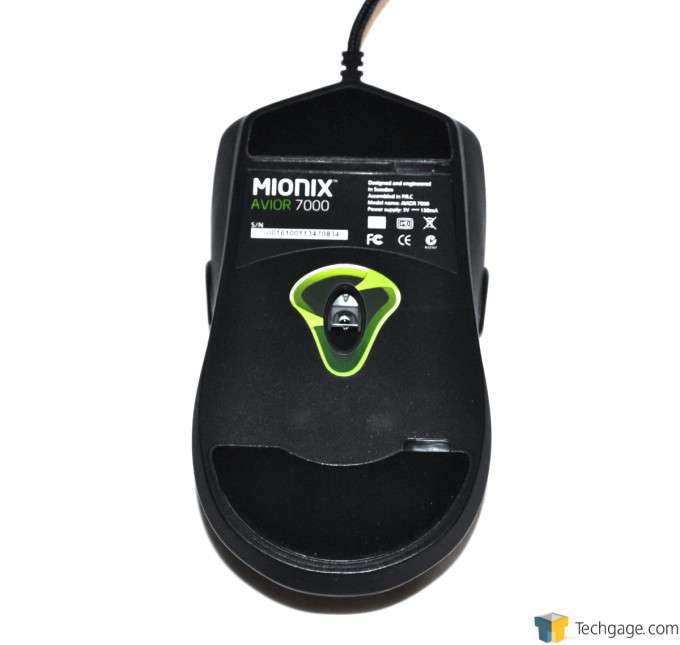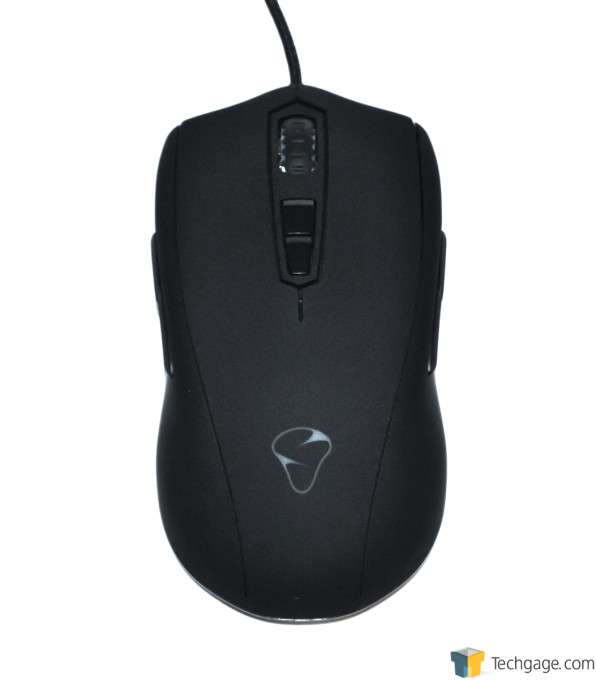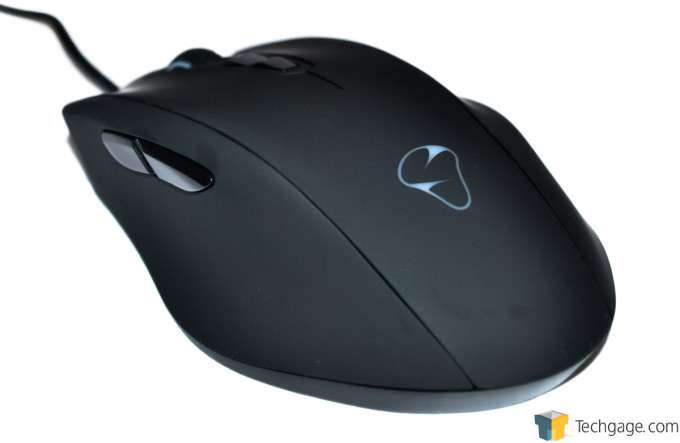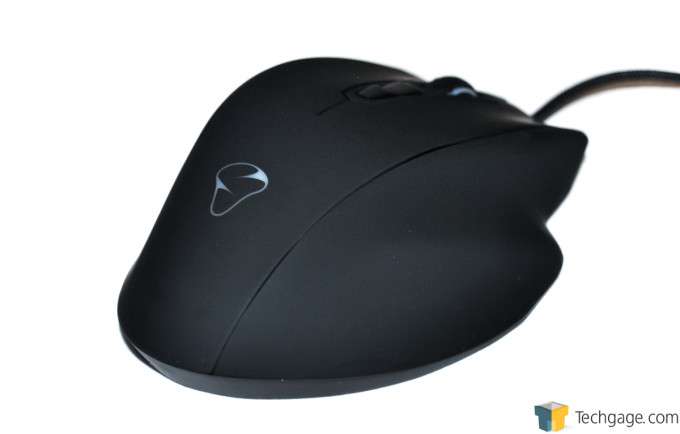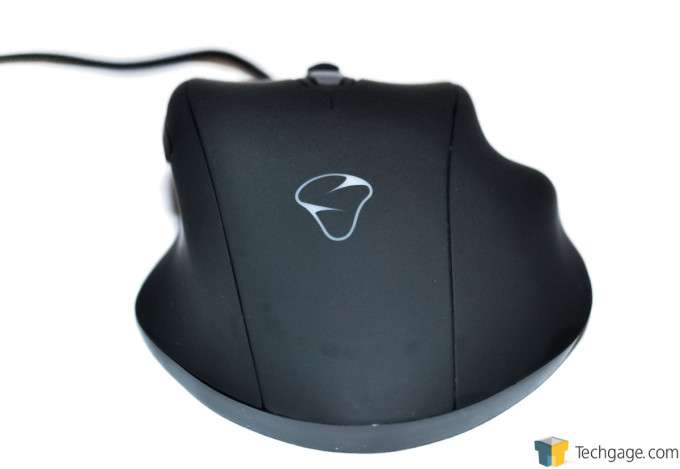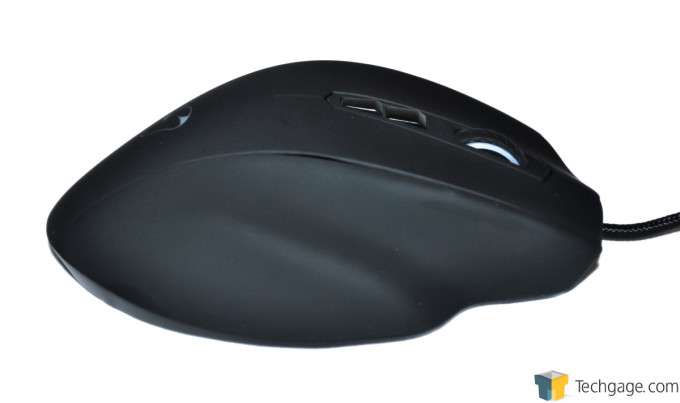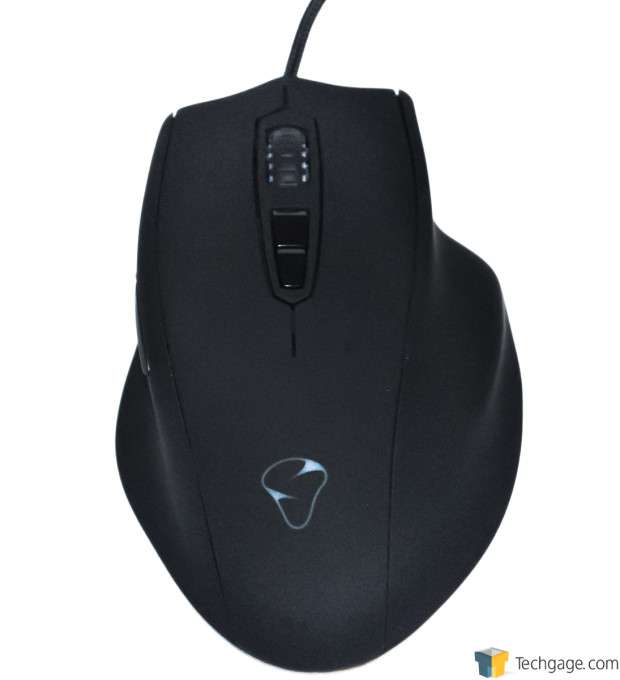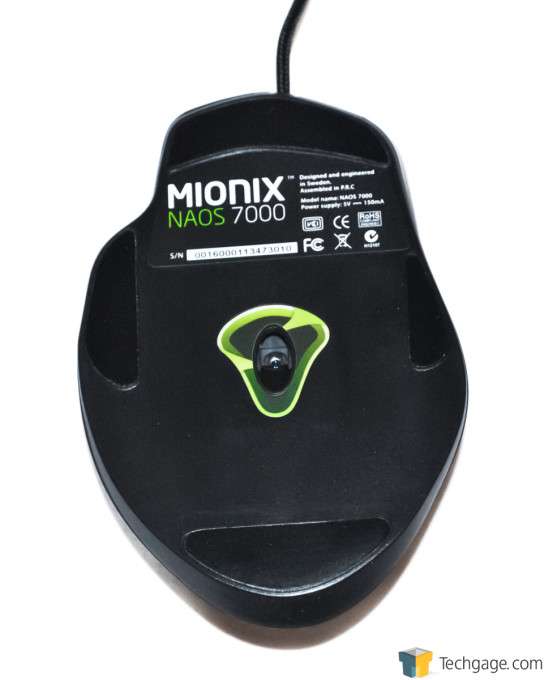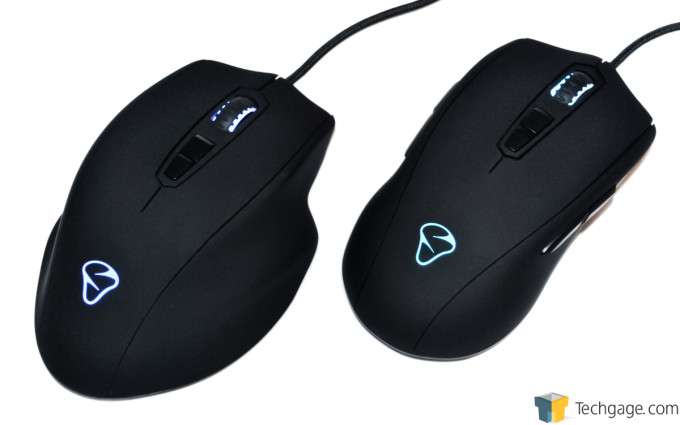- Qualcomm Launches Snapdragon 4 Gen 2 Mobile Platform
- AMD Launches Ryzen PRO 7000 Series Mobile & Desktop Platform
- Intel Launches Sleek Single-Slot Arc Pro A60 Workstation Graphics Card
- NVIDIA Announces Latest Ada Lovelace Additions: GeForce RTX 4060 Ti & RTX 4060
- Maxon Redshift With AMD Radeon GPU Rendering Support Now Available
Mionix Avior 7000 and Naos 7000 Review – Same, But Different

Mionix sent us two of its latest mice, the Avior 7000 and the near-identically equipped Naos 7000. They share basically the same design and internal components; the biggest difference is in form factor. As you might imagine, we’re taking a close look at both to try to see how good they stack up to each other, and the competition.
Page 1 – Introduction
You know how some cars may wear different badges and sport slightly different bodywork, but are essentially the same design beneath the metal skin? One memorable example is General Motors’ old “pony car”: The Chevrolet Camaro and the now-dead Pontiac Firebird were near-perfect clones of each other. Another example is the mid-1990s Ford Probe and the Mazda MX-6. Heck, the same thing happens even in the rarefied air that is the supercar market space: The Audi R8 is basically a Lamborghini Gallardo wearing a German business suit over its mechanical bits instead of the Lambo’s Armani.
Well, what’s good for car companies is also good for PC peripheral manufacturers.
Mionix, for one, seems to think so. After all, its Avior 7000 and Naos 7000 – both of which are the co-subjects of this review – are basically the same mouse under the skin except for a couple of details.
This practice of using one basic design, then tweaking a few features here and there to generate at least two “different” products, begs the question: Why do companies do this?
In my opinion, it’s a very easy way to expand product lines. More product lines means more options for the consumer. And more options for the consumer means more sales.
It’s a very intelligent and elegant strategy, really. A company only invests once for initial design and R&D and pre-production tooling prep; this is probably the most financially-intensive part of a new product roll-out, so it only makes sense for a company to reduce this cost as much as possible. If the basic design of the product can be tweaked, the company can then easily expand its product line without incurring a bigger budget hit.
I think Mionix operates on this very sound principle. Throughout the course of this review we’ll see just how much the Avior 7000 and the Naos 7000 share with each other, as well as how divergent from each other they are.
So, let’s see each one up close.
The Avior 7000 is an ambidextrous mouse. As such, its bodywork is symmetrical. It has nine buttons: There are two buttons on each flank (for a total of four), the left- and right-click buttons, the clickable scroll-wheel, and the two DPI-switching buttons on the Avior 7000’s spine, just behind the scroll-wheel.
Speaking of the scroll-wheel, it is notably bereft of any side-scrolling functionality. Most mice I’ve tested for Techgage can do side-scrolling through the scroll-wheel. While I personally don’t use side-scrolling too much, it’s interesting that the Avior 7000 can’t do it.
The Avior 7000’s surface is covered with a matte black, smooth rubberized coating which is both comfortable to the touch as well as resistant to fingerprints. The coloration certainly lends the mouse a serious, austere aspect, although there is a concession to gamers’ desire for some kind of visual bling (which I’ll show later).
Here are a few other shots of the Avior 7000 in detail.
This left rear 3/4 view shows off the Avior 7000’s smooth rump, highlighted by a Mionix logo. Because the Avior 7000 is completely symmetrical, the right rear 3/4 view is an identical mirror image.
Here you can see the left flank of the mouse, featuring the pair of thumb buttons. Again, the right flank looks the same as this.
This shot shows off seven of the Avior 7000’s nine buttons, as well as the braided cable. It also shows the mouse’s sculpted flank quite well.
And this shot shows off the Avior 7000’s underside. The emitter for the ADNS-3310 IR-LED optical sensor is almost perfectly dead-center (sitting within the Mionix logo – the company does a great job reminding you who made the mouse, doesn’t it?). This view also shows off the Avior 7000’s two large feet.
The plan view shows off the fact that the Avior 7000 is an ambidextrous mouse.
Now that we’ve looked at the Avior 7000, let’s turn our attention to the Naos 7000.
Judging by this photo, the Naos 7000 doesn’t really look that different from the Avior 7000. It shows all seven of the mouse’s buttons as well as the braided cable. Like the Avior 7000, the Naos 7000’s left flank is sculpted and is covered with the same rubberized covering. Perhaps the only visual difference that one can discern from this perspective is that the Naos 7000 has a slightly rounder and higher rump.
Speaking of the mouse’s rump, this shot shows off the left 3/4 view.
This shot of the right rear 3/4 view clearly shows that the Naos 7000 is a right-handed mouse. The right flank is sculpted so that the right ring finger and pinky each sit in their own grooves. These grooves make handling this mouse very comfortable.
The rear view shows off the Naos 7000’s sculpted flanks even more dramatically. The left flank has a groove cut out for the thumb, and you can really see the right flank’s shape and how the ring- and little-fingers are supposed to rest on the mouse.
This photo shows another principal difference between this mouse and the Avior 7000. Where the Avior 7000 has a pair of buttons on the right flank, the Naos 7000 does not.
The plan view also reinforces the fact that the Naos 7000 is a right-handed mouse, and nothing but.
And here’s a look at the Naos 7000’s bottom. By the way, the optical sensor is identical to the one in the Avior 7000. Also, because of its greater width, Mionix installed two more feet on the Naos 7000.
The Naos 7000 is clearly a close relative of the Avior. Both mice are equipped with the same optical sensor which, incidentally, is capable to a maximum DPI rating of 7000 (which explains where Mionix derives the “7000”). They also both share a similar understated aesthetic.
The two Mionix mice share other features. Both have an onboard 32MHz ARM processor; both also have high-quality Omron mechanical switches which not only feel great to actuate, but are also rated to have a lifespan of 20 million clicks. Under the skin, therefore, it’s clear that the Avior and the Naos are each other’s twin.
I mentioned earlier that Avior 7000 features a concession to some gamers’ hankering for some visual bling in their gear. The Naos 7000 does, as well.
And here it is: Both Mionix mice have LED effects that show up through the logo on the mice’s rumps and in their scroll-wheels. The shot shows both mice lit up as plugged into the host machine sans their software packages installed. The mice’s software endows the user the ability to manipulate the LED effects as they so desire.
Speaking of the software, we’ll have a closer look at that in the next section.
Support our efforts! With ad revenue at an all-time low for written websites, we're relying more than ever on reader support to help us continue putting so much effort into this type of content. You can support us by becoming a Patron, or by using our Amazon shopping affiliate links listed through our articles. Thanks for your support!




